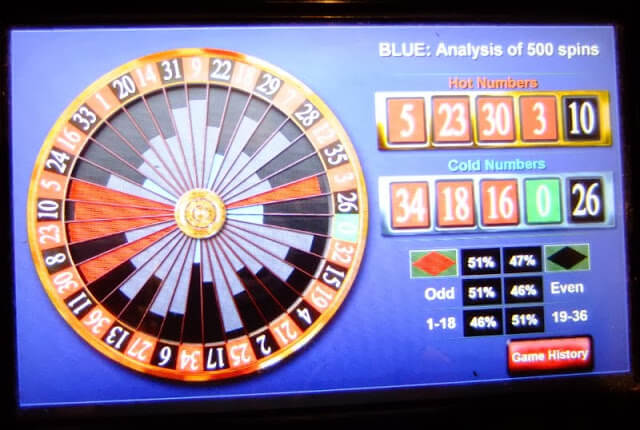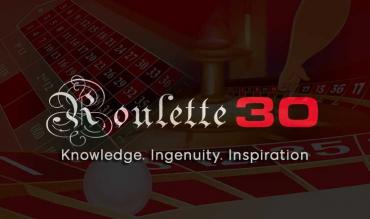There is always something mystifying about beating casinos in their ground. The literature is full (sort of) stories in which players beat casinos one way or the other. Sometimes it was by virtue, most times it was by exploiting casinos weaknesses. One of the most famous and controversial ways to beat casinos, and especially roulette, is (or should I say “was”) by identifying and attacking biased wheels.
The biased wheel attack is a strategy to beat the roulette wheel by attacking its inevitable physical imperfections. It is quite impossible for man to create a perfect machine. The roulette wheel is made from wood and metal and subject to wear and tear over time. Further the wheel is operated by a human who may also add to the imperfect running of the wheel. Further, roulette wheels are incredibly expensive machines and casinos will be willing to accept small imperfections to get longer life out of each wheel (as long as they don’t detect anyone making systematic profit from those imperfections!)
The perfect roulette wheel needs to be flawlessly balanced, the pockets uniformly surfaced and structured, the frets uniformly resilient and resistant to wear, and the dealers incapable of consciously or unconsciously controlling the ball. It is quite impossible for an active wheel to remain perfect over the long run, rather it is quite natural for the wheel to deviate from perfectly random outcomes more and more over the long run. A slight groove invisible to the human eye will be enough to cause the ball to drop more in one position more than others. Over time as the groove becomes more traveled becomes more deeper and deeper. That is, small imperfections are likely to grow more reliable over time.
The biased roulette wheel strategy seeks to find these imperfections and exploit the subsequent positive odds from certain outcomes on biased wheels.
Clocking the Wheels
Biased wheels cannot have obvious defects that are able to be detected by traditional inspections and tune ups. They are by nature invisible to the human eye. You need to find them statistically, by clocking the wheel. This involves observing a wheel and recording observations. You can then see if the actual odds differ greatly from the expected probability of a perfect wheel. That is, on a European roulette wheel you should see each number to come up around 1 in 37. The House pays 1 to 35, so numbers that come up more often that 1 in 35 would have a positive expected value.
So if by clocking a wheel for a 1000 observations, you find that Black 26 came up 1 in 30. For whatever physical imperfections Black 26 is coming up 1 in 30 instead of 1 in 37. Put another way, you have found a wheel with a bias for Black 26. If you had bet $10 on Black 26 straight up for the last 1000 spins then you would have a profit of $1,996. Observing around 1 in 30, you would have seen Black 26 win 33 times and lose 967. So you would have won $11,550 ($10*$35*33) and lost $9670 ($10*967), giving a profit of $1,996 ($11,550 – $9670). (Note: betting larger will give bigger long run profits but will also cause bigger dollar amount swings up and down in the short run. So if you want to bet more, you must make sure you have the bigger bankroll to take short term swings).

Is this enough evidence of a biased wheel? Probably not.
The question for you is, will this roulette wheel show a bias for Black 26 for next 1000 spins? The central limit theorem says that the greater the number of observations, the closer you come to the true probabilities. Put another way, the more numbers you collect the more accurate your evaluation for bias will be. Following the above example, you might see in the first 100 observations that Red 14 was coming up 1 in 25 but over the next 900 observations Red 14 balanced back out to have an overall odds of 1 in 36. So if you had only taken 100 observations and thought that wheel was biased for Red 14, then you would have lost money for the next 900 spins. Short term deviations and fluctuations are quite normal. By clocking a wheel for very large numbers of observations you are trying to weed out the short term random fluctuations from the true long run odds. So the basic rule is, the more numbers you collect the better.
(This is why the casino is happy to let players write down numbers for a short while, so they overbet on false short term illusions of pattern. But if you sit at a table and write numbers for 8 hours everyday for 2 weeks they will start to get very upset!)
Personally, I also like to check that the bias makes some sense. We are looking for biases because of some physical imperfection. These imperfections are unlikely to be exclusively biased for a single number. Rather some loose fret might be slowing the ball down more than usual and making the numbers behind it more likely to come up. So you should check to see that the numbers surrounding the potentially biased number are also coming up more than expected. So if we see Black 26 coming up 1 in 30 and we see Red 3 and 0 coming up 1 in 32, then we can be more sure that there is some physical flaw in the roulette wheel.
Famous bias wheel attacks
The most famous bias wheel attack was conducted by Joseph Jaggers. Mr. Jaggers, with a team of 6 clerks, clocked all the roulette wheels at the Monte Carlos. They found only one wheel showing significant bias. In their bias wheel attack Mr. Jaggers managed to walk away with $325,000 – a huge sum for 1873!
More recently, in the early 1990s, Gonzalo Garcia-Pelayo took massive numbers of observations of the roulette wheels at the Casino de Madrid. He then used a computer to make a statistical analysis of his collection of observations. As expected he found statistical evidence of biased wheels. He then used a rotating team of family members to bet on the most likely numbers. Once the Casino de Madrid owners realized what was happening, they banned Gonzalo from the casino entirely. The casino operators went further, taking Gonzalo to court for cheating. The Spanish courts ruled in Gonzalo’s favor, saying that he had not influenced the actual operation of the casino’s roulette wheels. Gonzalo was able to win well over a million euros over several years.
See also this amazing documentary about How the Gonzalo Garcia-Pelayo family exploited biased roulette wheels
Advice on execution
You need to decide on what degree observed of bias you are willing to accept before committing a large chunk of your bankroll on an attack. Some people will only accept at least 1 in 25 others might be happy with 1 in 30. The more bias you want, the less likely your actually going find a wheel with that much bias but on the flip side the more bias observed reduces the ;monetary risk with the attack and the faster you will accumulate profits. On the other extreme, a bias of only 1 in 34 is probably too tight to make a decent profit and may more likely be short term deviation.
You need a large number of observations while not giving away to casino operators that you are collecting large number of observations. Depending on the casino environment, there are few ways to do this but you will have to work the best way for the specific situation. Some casinos have pokies or slot machines near roulette tables, this lets you sit at a slot machine for long periods and still observing roulette numbers from a distance. You can run a rotating team of observers to clock the roulette wheel for short periods each. You can use a small video camera to record the roulette numbers while it appears you are just blindly gambling. The key is not to get marked recording large numbers.
While bias wheel attacks are not illegal, casinos will use their right to refuse entry on some trivial grounds to stop your attack. If they are cunning, they may switch wheels in anticipation of a bias wheel attack.
You will also need to know the casino’s own schedule for wheel maintenance and possibly rotation. You want to start clocking just after maintenance and continue until the next maintenance. If you have a way of definitely identifying a specific roulette wheel, it may be interesting to see if potential bias continues after a regular maintenance check.
This is more a hint, but I do have a variation on the standard clocking. I cannot give it away but the way casinos are checking for wheel bias themselves does not match the actual operations of the roulette game. If you can work this out, you will find a big gap between the casino’s own bias wheel checks and finding actual imperfections in wheels.
Carrying out a successful bias wheel attack requires a lot of patience, cunning and skill. It may not give you the high of being on a hot rush, but when you walk out of a casino after getting away with such an attack you will have quite a different high. It is worth it for those willing try. Remember, with casino’s knowing about the potential for bias wheel attacks, you have quite a short window of opportunity between maintenance of the wheels so you need to be quite organized and ready to move quickly. Also, be satisfied with having a few big winning sessions. If you are too showy or get marked you will quickly find yourself on a blacklist.
Now the question of the 10 million dollars is: do biased wheels exist today, or are they so perfectly constructed and maintained, that biased wheel attacks have become obsolete. Well, I know some people who say they still make a living by this method.


